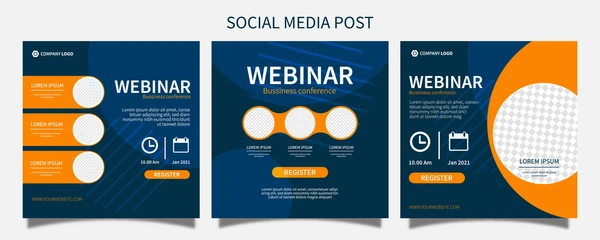With the rise of digital education, more and more professionals are turning to online teaching as a way to share expertise , build authority , and even generate passive income .
If you have experience in marketing, finance, entrepreneurship, leadership, or any other business-related field, teaching online business courses can be a powerful way to reach a global audience while earning income from your knowledge.

Step 1: Choose Your Business Niche
Before creating a course, decide what specific area of business you want to teach. Popular sub-niches include:
- Digital Marketing
- Financial Literacy
- Entrepreneurship & Startups
- Project Management
- Leadership & Management
- E-commerce & Dropshipping
- Freelancing & Remote Work
- Business Strategy & Planning
👉 Tip: Pick a topic you’re both passionate and experienced in — and one that has demand in the market.
Step 2: Validate Your Course Idea
Don’t build a course nobody wants! Validate your idea by:
- Researching what people are searching for (Google Trends, Ubersuggest)
- Checking popular course platforms like Udemy, Coursera, and Skillshare
- Surveying your audience via email or social media
- Engaging in Reddit communities like r/Entrepreneur or r/FreelanceUnion
Step 3: Plan Your Course Curriculum
A well-structured curriculum is key to student success. Here’s how to plan it effectively:
1. Define Learning Outcomes
What should students know or be able to do after finishing your course?
2. Break It Into Modules
Organize your content into digestible sections — e.g., Intro to Marketing → SEO Basics → Paid Ads → Analytics
3. Add Practical Assignments
Include quizzes, exercises, case studies, or downloadable templates to help learners apply what they’ve learned.
Step 4: Create Your Course Content
Now it’s time to produce your course materials. You’ll need:
Tools for Recording:
- Laptop Camera or DSLR – for video lessons
- OBS Studio or Loom – for screen recording
- Canva or PowerPoint – for slides
- Audacity or Descript – for audio editing
- Lighting Setup – ring light or natural light works best

Step 5: Choose a Platform to Teach On
You have two main options:
Option A: Use a Marketplace Platform
Great for beginners who want visibility and built-in audiences.
| Platform | Best For | Key Features |
|---|---|---|
| Udemy | Beginners | Easy to use, low barrier to entry |
| Coursera | Experts & Universities | Credible, global audience |
| LinkedIn Learning | Professionals | High-end production, expert-led |
| Skillshare | Creative Entrepreneurs | Project-based learning |
Option B: Host Your Own Course
Ideal if you want full control over branding and pricing.
| Platform | Best For | Key Features |
|---|---|---|
| Teachable | All-in-one creators | Drag-and-drop builder, payment integrations |
| Thinkific | Customization lovers | Unlimited courses, landing pages |
| Kajabi | Coaches & consultants | Email marketing, membership sites |
| Podia | Simple creators | No monthly fees, easy uploads |
Step 6: Price Your Course Strategically
Your pricing strategy depends on your goals and audience. Some common models:
| Model | Pros | Cons |
|---|---|---|
| One-time Fee ($99–$499) | Easy to promote | May require discounts |
| Subscription ($19–$49/month) | Recurring income | Needs ongoing content |
| Free + Upsell Premium | Builds trust | Slower initial revenue |
| Group Coaching Bundle | Higher value | More work per student |
👉 Pro Tip: Offer a free mini-course or webinar first to build trust and convert leads.
Step 7: Market Your Course Effectively
Even great courses fail without good marketing. Here’s how to get started:
Free Marketing Strategies:
- Build an email list with Mailchimp or ConvertKit
- Post valuable content on YouTube , Instagram , or LinkedIn
- Join Reddit communities like r/Entrepreneur or r/digitalmarketing
- Publish blog posts or guest articles with course links
- Run live workshops on Zoom or WebinarJam
Paid Marketing Tips:
- Facebook & Instagram ads targeting your audience
- Google Ads for high-intent keywords
- Promote on Udemy or Skillshare
- Partner with influencers or micro-influencers

Step 8: Essential Tools for Teaching Online
Here’s a quick list of tools to help you teach business courses online:
| Tool | Purpose |
|---|---|
| Canva | Design course visuals, banners, and slides |
| Loom / Screenflow | Record video lessons |
| Grammarly | Improve written content |
| Trello / Notion | Organize course development |
| Zoom | Live Q&A sessions or webinars |
| Teachable / Thinkific | Host and sell your course |
| Facebook Groups / Discord | Build community and support learners |
Step 9: Launch and Grow Your Online Teaching Business
Once your course is ready, it’s time to launch!
Steps to Launch:
- Set a launch date and create urgency
- Build a sales page with testimonials and clear benefits
- Send targeted emails to your list
- Run a limited-time offer or early bird discount
- Ask satisfied students for reviews and referrals
Benefits of Teaching Online Business Courses
- Passive Income Potential – once created, courses keep generating revenue.
- Global Reach – teach students anywhere in the world.
- Establish Authority – become a go-to expert in your niche.
- Flexible Schedule – work when and where you want.
- Low Startup Costs – no need for a physical classroom.
Real-World Examples of Successful Online Business Instructors
| Instructor | Platform | Course Topic | Estimated Revenue |
|---|---|---|---|
| Chris Haroun | Udemy | Business Fundamentals | $1M+ |
| Neil Patel | Self-hosted | Digital Marketing | Millions |
| Marisa Murgatroyd | LinkedIn Learning | Freelancing | Top-rated instructor |
| Amanda Rose Bain | Teachable | Personal Branding | 6-figure course sales |
Final Tips for Teaching Business Courses Online
- Start small — don’t wait for perfection
- Focus on solving one problem at a time
- Keep videos short and engaging (10–15 minutes max)
- Provide actionable steps, not just theory
- Get feedback and improve with each cohort
- Stay consistent — building an audience takes time
Frequently Asked Questions (FAQs)
Q1: Do I need formal qualifications to teach business courses online?
No! Most students care more about practical experience than degrees. Showcasing real results helps build credibility.
Q2: What equipment do I need to start?
At minimum: a laptop, webcam, microphone, and basic lighting. You can upgrade later.
Q3: Can I teach business courses for free?
Yes! Platforms like YouTube, TikTok, and LinkedIn allow you to build an audience before selling a premium course.
Q4: How much can I earn teaching online business courses?
It varies:
- Udemy instructors earn $10–$100+/student sale
- Self-hosted courses can bring in $1,000–$10,000+ per launch
- Membership sites may earn $500–$5,000+/month
Q5: How long does it take to create a business course?
From 20–100 hours , depending on depth and production quality. But you can start with a mini-course (1–3 hours of content) and expand later.






0 Comments